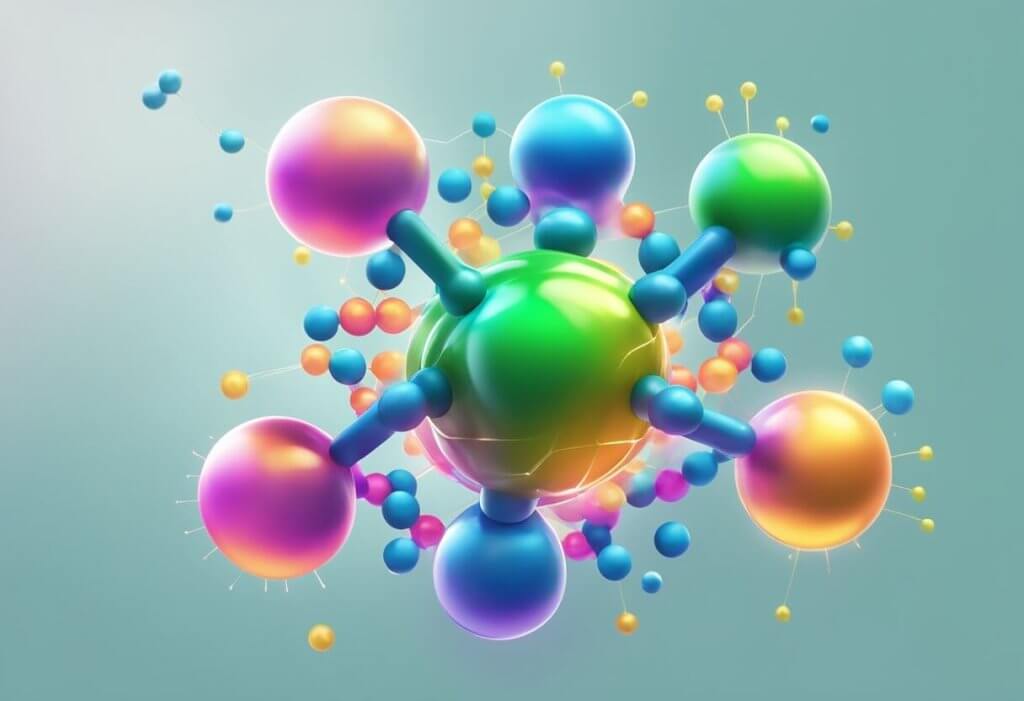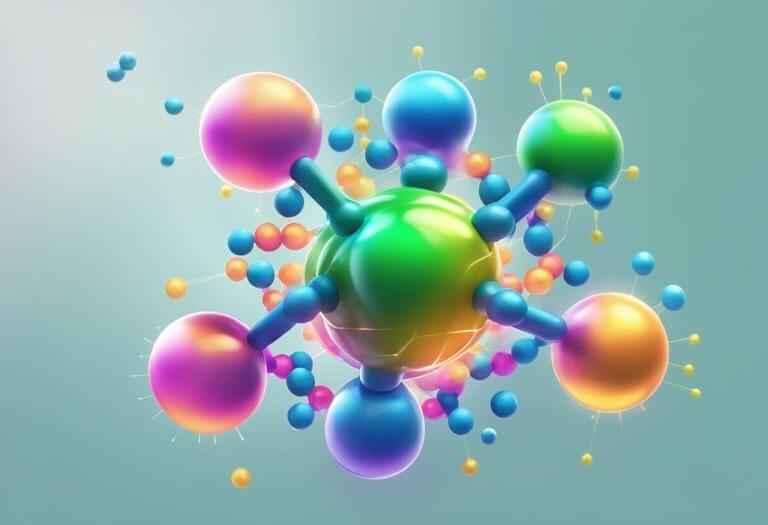Cannabidiol (CBD) has gained considerable attention for its potential in easing symptoms such as anxiety, pain, and inflammation. Its lesser-known counterpart, cannabidiolic acid (CBDA), is the parent compound from which CBD originates in the cannabis plant. Often, CBDA has been overshadowed by CBD, but emerging research suggests that CBDA might hold its own unique benefits.
As CBD goes through a process called decarboxylation, where it is heated and transformed from its acidic form CBDA into CBD, the properties and effects on the body change.

Exploring the nuances of CBD vs CBDA is not just a matter of chemistry but of potential implications for therapeutic use. While CBD has been more widely studied and incorporated into a multitude of products, CBDA is beginning to draw attention for its potential in areas such as anti-nausea and anti-inflammatory effects. Understanding the difference between these two cannabinoids, how they interact with the body’s endocannabinoid system, and their possible health benefits is crucial for consumers looking to make informed choices about their use.
Key Takeaways
- CBD and CBDA are related but distinct cannabinoids with unique properties.
- Emerging research highlights CBDA’s potential therapeutic benefits.
- Understanding how each interacts with the body’s endocannabinoid system is important for informed cannabinoid use.
Therapeutic and Medicinal Insights

The therapeutic landscape of CBD and CBDA is marked by their potential to alleviate various ailments, with ongoing research exploring their full capabilities. While they share some similarities, distinct properties contribute to their medicinal value.
Potential Health Benefits
CBD and CBDA have shown promise in reducing inflammation and associated pain. Individuals dealing with anxiety, stress, and depression have also found these cannabinoids beneficial due to their influence on serotonin receptors, which are pivotal for maintaining mood balance. Studies suggest that CBDA may have potent anti-nausea properties, making it a potential complement to chemotherapy treatment. Furthermore, CBD’s approval in the drug Epidiolex underscores its effectiveness in managing epilepsy and severe seizures.
“CBDA is a precursor to CBD, and evidence suggests it has distinct therapeutic benefits,”
Dr. Ethan Russo, neurologist and cannabis researcher.
CBD and CBDA in Clinical and Research Settings
In clinical settings, CBD’s impact on Epilepsy stands out, with Epidiolex being an FDA-approved prescription for this condition. Ongoing research is tackling their roles in COVID-19 complications and examining how they may modulate receptors linked to serotonin production, influencing both mood and therapy outcomes. Unlike traditional nonsteroidal anti-inflammatory drugs (NSAIDs), cannabinoids offer an alternative approach to managing inflammation without the common side effects of NSAIDs.
Side Effects and Drug Interactions
While CBD and CBDA are generally well-tolerated, they can have side effects such as fatigue or changes in appetite. Importantly, they’re known to interact with certain medications, mimicking the effects of compounds like grapefruit on the metabolism of drugs. A physician should always be consulted to understand potential drug interactions. As research progresses, more precise guidelines on the use of these cannabinoids as medical benefits will emerge.
Understanding CBD and CBDA
Before diving into the scientific aspects, it’s essential to know that cannabidiolic acid (CBDA) and cannabidiol (CBD) are closely related compounds found in the cannabis and hemp plants. They interact with the body’s endocannabinoid system (ECS) but have different properties and effects.
Chemical Structure and Precursors
CBDA and CBD both originate from the same precursor, cannabigerolic acid (CBGA), in the cannabis plant. Through a process guided by the plant’s enzymes, CBGA converts into cannabidiolic acid (CBDA) and tetrahydrocannabinolic acid (THCA), the precursors to CBD and THC, respectively. CBDA is non-psychoactive and has a similar structure to CBD but with the presence of a carboxyl group that impacts its interaction with the body.
- CBGA (Cannabigerolic acid)
- Precursor to CBDA, THCA, and CBG
- CBDA (Cannabidiolic acid)
- Direct precursor to CBD
- THCA (Tetrahydrocannabinolic acid)
- Precursor to THC (psychoactive compound)
The Decarboxylation Process
Decarboxylation is a critical chemical reaction that transforms CBDA into CBD. When cannabis plant material is heated, the carboxyl group is removed from CBDA, converting it to CBD, which is known for its anxiolytic and neuroprotective properties. This process increases the compound’s ability to interact with the ECS, altering its effects on the body.
- Decarboxylation:
- Heat → CBDA → CBD
- Increases interaction with ECS
- Results in:
- Non-psychoactive CBD, with enhanced bioactivity
Comparing Effects on the Body
CBDA and CBD have different potentials for therapeutic effects. They both engage with the ECS but do so in distinct manners. CBDA has been researched for its anti-inflammatory and anti-nausea properties; it may also have a role in combating breast cancer cells. CBD is more widely recognized for its efficacy in conditions like anxiety and may offer neuroprotective benefits.
- CBD:
- Anxiolytic effects
- Non-psychoactive
- CBDA:
- Anti-inflammatory
- Potential cancer-fighting properties (e.g., breast cancer)
- ECS Interaction:
- Both interact differently with the ECS
- Molecular structure affects potency and efficacy
A Promising Study: A 2021 study found CBDA was more effective than CBD at reducing inflammation and nausea in animal models.
https://www.liebertpub.com/doi/10.1089/can.2021.0092
Frequently Asked Questions
In this section, readers can find concise answers to common questions about the differences and effects of CBD (Cannabidiol) and CBDA (Cannabidiolic acid), especially regarding anxiety, chronic pain, sleep, and overall wellness benefits.
What’s the difference in effects between CBD and CBDA for managing anxiety?
CBD has been recognized for its potential to ease anxiety symptoms by interacting with neurotransmitters. On the other hand, CBDA may also influence mood by impacting serotonin levels, which could play a role in managing anxiety.
Can either CBD or CBDA provide relief for chronic pain?
Both CBD and CBDA have properties that might help with chronic pain. CBD may reduce pain associated with conditions like arthritis by interacting with neurotransmitters and reducing inflammation. CBDA’s role in pain management is less understood but it’s thought to have similar anti-inflammatory effects.
Which one is more effective for a good night’s sleep, CBDA or CBD?
CBD is frequently highlighted for its potential to improve sleep by addressing factors like pain and anxiety that can disrupt rest. The effects of CBDA on sleep are not as well-documented, requiring further research for conclusive comparisons.
What are the overall wellness benefits of using CBDA?
CBDA may offer a range of wellness benefits due to its interaction with the endocannabinoid system. It’s suggested that along with potential anti-inflammatory and nausea-reducing properties, CBDA might contribute to overall well-being, with promising results in areas such as reducing anxiety and managing pain.
“After struggling with migraines for years, I started taking a CBDA tincture and it has been life-changing. The migraines are much less frequent and severe,” says Sara M., 34, from Denver.
Sara M., 34, from Denver
